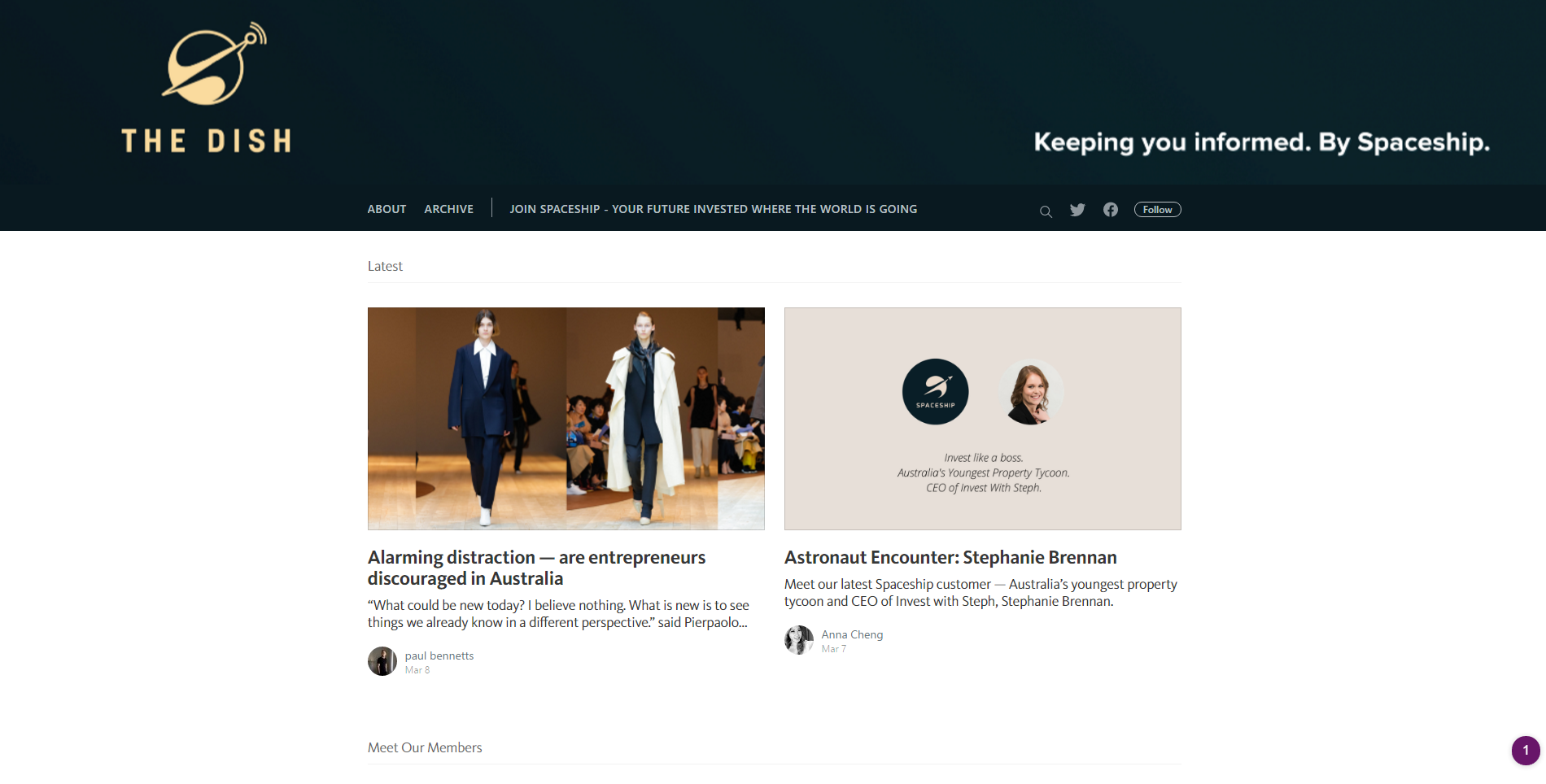Spaceship Part I: a lesson in engagement
The holy grail of superannuation: an engaged member base. This is difficult enough to achieve if you have thousands of advisers on your books and a set of members nearing retirement. But engaging with younger people – say anyone 25+ – is a puzzle few in this industry would say they have solved so far. And as we explained in last week’s Trialogue, the economics of the younger demographic haven’t been attractive, so the segment hasn’t been prioritised.
But there is a new kid on the block with an entirely new approach. Spaceship (even the name is different) claims to have rapidly engaged and acquired 2,000 superannuation customers with assets of $60m before even launching, having targeted them digitally with a technology-driven investment story. There are also more than 20,000 other customers on a waiting list to join. ‘Waiting list’? For superannuation? We’re fairly confident no fund has managed to induce 20,000 people into queuing for superannuation before.
So what lessons, if any, can we learn from the Spaceship story so far, and will Spaceship get off the ground?
The first lesson is clearly engagement. Spaceship appears to have proven that direct superannuation customers can be located, targeted, engaged and (perhaps less certainly) acquired directly through digital channels, effectively selling those customers a solution to a problem they probably didn’t know existed. A good outcome, particularly when compared to the 50,000 members acquired so far by another direct offer, ING’s Living Super proposition, launched five years ago (some of whose members are intermediated).
The engagement and lead generation is executed with a broad digital campaign, led by a recognizable face (Mike Cannon-Brookes) with a compelling technology-led story.
Here are a few ways we’ve seen Spaceship target its customers and engage with them.
1. Social – Spaceship and Cannon-Brookes appear in your Facebook feed (well, mine at least); you are invited to click through to Spaceship to invest in a superannuation offer that invests ‘where the world is going, not where it’s been’. Technology, in other words.
2. Content – technology content, loosely related to investments, is featured on Spaceship’s blog named The Dish as well as on Spaceship’s Facebook page; one regularly seen Facebook post invites readers to borrow a book from the Spaceship library, recommended by an Australian technology entrepreneur.
3. Meetups – The Dish is also the title of Spaceship’s meetups.com page. Meetups is a website ripe with customers in Spaceship’s target demographic and (critically) these people are influencers. A selection of Facebook or Google profile photos are shown down the side of the page so you can see who else is attending (tip: they are mostly achingly hip). You are invited to register for a weekly meetup at its Clarence Street offices where you will rub shoulders with like-minded aspiring astronauts, find out more about Spaceship and walk away with a Spaceship t-shirt. Spaceship representatives communicate directly with potential customers in the comments relating to each event.
Once engaged, you are invited to Spaceship’s website where you (the lead) are qualified when you join the ‘waiting list’ and provide your personal information. Game-like triggers usher you further towards the Spaceship. Refer friends and you jump forward in the exclusive queue, generating more potential engagement of high quality leads of like-minded young professionals through word of mouth until you reach the ultimate prize: you are now the proud owner of a Spaceship account; you are an astronaut. Importantly, you have also spread the word.
Digital customer acquisition and the methods employed by Spaceship are hardly new. It’s a strategy with a track record of success outside of financial services. But there are few examples of successful digital customer acquisition campaigns at scale in the wealth and asset management industry globally, let alone in Australia.
The lesson here for super funds, platforms and asset managers is clear: it is possible to engage the unengaged. But this requires a whole new approach. As they say, if you always do what you’ve always done, you will always get what you’ve always got.
So will the Spaceship take off? This depends to some extent on whether Spaceship can profit from the relatively low average superannuation balances of millennials. More on that next time but the economics aren’t as dire as you might think.
Never miss a Trialogue! Sign up to receive future Trialogues direct to your inbox.

